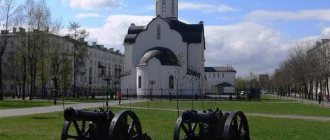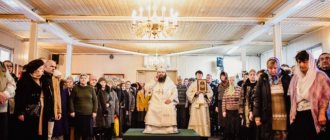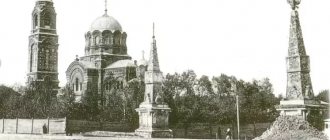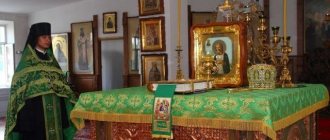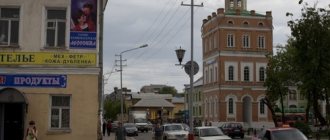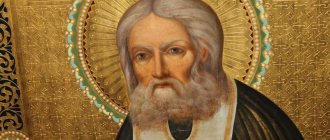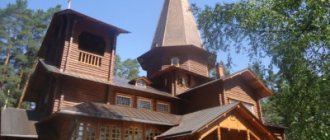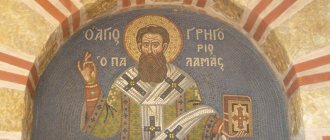Like many other Russian cities, the city of Kursk is famous for its golden domes. Temple of Seraphim of Sarov, whose address is: st. Polevaya 17-6, open daily. The rector of the church is Archpriest Georgy Annenkov.
In Russia, before the revolution, a huge number of churches of this kind were built, many of them were destroyed by the Bolsheviks or turned into outbuildings and courtyards. Every city has many churches that have something to tell people about. Let's take Kursk, for example.
The Church of St. Seraphim of Sarov is located in the historical district of this city called Gypsy Hill. We must immediately point out the fact that it was the Kursk land that gave us the great holy ascetic Seraphim. The idea of building this church came to the parishioners after the canonization of their compatriot St. Seraphim took place, solemnly held in 1903 on July 19.
Kursk: Church of St. Seraphim of Sarov
In 1905, with funds from the city and merchant I.V. Puzanov, who donated 10 thousand rubles for the construction, a two-complex school was built, and with it a church in the name of St. Seraphim. The Kursk diocese was also interested in the successful outcome of this very important matter. The city bishop Pitirim consecrated the new buildings. As soon as the temple opened, crowds of pilgrims flocked to it to honor the memory of their beloved saint, not only from this area, but also from other settlements. They wanted to receive prayer help and protection from the wonderworker Seraphim.
Such is the city of Kursk. The Church of St. Seraphim of Sarov was not a parish church, since the residents of Gypsy Hill who lived nearby were not assigned to it and, accordingly, could not receive and fully realize their religious and spiritual needs. Added to this was the fact that the church did not have its own composition of priests. All required services were performed by a visiting priest from the cathedral.
Other Kursk news for this day
7 June 2021, 21:06In Kursk, the sewerage section from 1st Stepnaya Street to PLC will be repaired for 184 million rubles | 7 June 2021, 21:01Roman Starovoit presented awards to social workers of the Kursk region |
7 June 2021, 19:32In the Kursk region, residents over 65 years of age will receive 3,000 rubles for vaccination against coronavirus | 7 June 2021, 17:51In April, 368 people with coronavirus died in the Kursk region |
7 June 2021, 16:30In Kursk, convicts are cleaning the streets | 7 June 2021, 15:45In Kursk, the regional court declared the dismissal of the chief engineer illegal due to loss of trust of the employer |
7 June 2021, 14:30In Kursk, an application was submitted to the prosecutor's office: a private beach blocks the road along the bank of the Seim River | 7 June 2021, 12:51Near Kursk, a 77-year-old driver without a license died after crashing into a parked car. |
7 June 2021, 12:20In the Kursk region it is expected up to +24 degrees, rain, thunderstorms and hail | June 7, 2021, 12:00In the Kursk region, border guards detained large-scale cigarette smuggling |
7 June 2021, 11:36Near Kursk, a car crashed into a tree, the driver, a woman and a 3-year-old child were injured | 7 June 2021, 11:21In the Kursk region, coronavirus cases were detected in 11 districts and 5 cities per day |
7 June 2021, 11:17In Kursk, the head of a kindergarten is suspected of receiving a bribe of 650 thousand rubles | 7 June 2021, 11:16In the Kursk region on June 7, 3 more people died from coronavirus |
7 June 2021, 11:04In the Kursk region, 90% of doctors were vaccinated against coronavirus | 7 June 2021, 10:39In Kursk, by June 25, the status of the ancient cellars of the merchant Maltsov will be determined |
7 June 2021, 10:20In the Kursk region, an air ambulance helicopter transported 9 adults and 7 children | 7 June 2021, 10:04Rector of South-West State University Sergei Emelyanov and Professor of KSU Vasily Zolotorev became honorary citizens of the Kursk region |
7 June 2021, 09:55Three people in the Kursk region fell ill with tick-borne borreliosis | 7 June 2021, 09:5361 new cases of coronavirus were detected in the Kursk region per day |
7 June 2021, 09:47In the Kursk region, a resident of the Rila St. Nicholas Monastery, Father Ioannikis, died | 7 June 2021, 09:20A ten-day subscription period has started in the Kursk region: you can subscribe to “For Each Other” with discounts |
| 7 June 2021, 08:57 |
Coming
However, after some time, the question of converting the church into a parish church became acute. Such a desire appeared among the local population, which was assigned to the Ochakov Church of the Dormition of the Mother of God, and the other part of the people had just begun to move to this place from other districts of Kursk according to administrative documents of the city government.
In 1908, the Kursk Bishop Pitirim was the first to submit a petition to the city government from the residents of the Gypsy Hill for the transfer of the temple along with the school under the wing of the Spiritual Consistory, followed by the Kursk and Oboyan Archbishop Tikhon.
In the documents intended for the Synod Board, Archbishop Tikhon presented the grounds, which indicated the number of houses and residents who wished to be separated into a separate parish. As a result, there were 208 and 1316 male and female souls in private houses.
Requirements
Then the city government requested data on the conditions that would make it possible to open an independent parish at the church. The spiritual consistory communicated its demands in document No. 4766 dated February 24, 1911, which stated that the church building should be independently managed by the Kursk diocese (under the jurisdiction of the Diocesan authorities); The area of the entire church land, according to the construction regulations, will be the property of the temple.
After a short time, these requirements were also supplemented by the fact that the school premises at the church should be given over to the needs of the parochial school named after. engineer Konopaty, which they intended to open here. In 1993, in this vast room, which differed from the main architecture of the temple, a chapel was built in honor of St. Joseph of Belgorod after his canonization. This is also a great holy miracle worker for whom Kursk can be famous. The Church of St. Seraphim of Sarov could not ignore this fact.
After everything was legally settled, the Spiritual Consistory asked for the Highest permission to accept the church-school from the city government as a gift.
In 1905, with joint funds from the city and the merchant I.V. Puzanov, who donated 10 thousand rubles to the city, a two-complex school and a church attached to it were built on Gypsy Hill in the name of St. Seraphim of Sarov, who was consecrated by Bishop Pitirim of Kursk. Since its opening, the temple has constantly attracted numerous pilgrims not only from this area, but also from other areas of the city and localities, who resorted to the prayerful help of St. Seraphim, the Wonderworker of Sarov. This church was not a parish church (that is, the residents of Gypsy Bugr who lived nearby were not assigned to it, who, accordingly, could not fully realize their spiritual and religious needs), did not have its own parable, and services were conducted by a visiting priest of the cathedral. The transformation of this church-school into a parish church was dictated by the truly urgent need of the local population, some of whom were assigned to the Church of the Assumption of the Mother of God in Ochakovo (now Antokolsky Street), while some were just resettled from other areas of the city of Kursk by order of the City Council - “Producer of settling city residents in vacant city spaces.” The petition for the transfer of the temple and the school located in it to the jurisdiction of the Spiritual Consistory began to be submitted by Bishop Pitirim of Kursk to the City Council in 1908 on behalf of the residents of Gypsy Bugr, and then by Archbishop Tikhon of Kursk and Oboyan. In the Government’s submission to the Synod, Archbishop Tikhon, among the reasons for opening a parish, indicated the number of houses and population wishing to be separated into a separate parish. There were 208 houses with a population of 1316 souls of both sexes. In response to a request from the City Council about the conditions under which it is possible to open an independent parish at the St. Seraphim Church, the Spiritual Consistory on February 24, 1911, No. 4766, reported that 1) The building of the St. Seraphim Church-school should be transferred to the jurisdiction of the Diocesan authorities; 2) The area of land located under the church at a distance according to the construction regulations must become the property of the temple. Later, this decision was supplemented by the fact that the school building located in the temple should be left for the needs of the school (this room is quite large in area, very different from the general architecture of the temple, and in 1993 a chapel was built here in the name of St. Joasaph of Belgorod ). In the future, it was planned to open a parochial school named after engineer Konopaty here.
Temple of St. Seraphim of Sarov.
Photograph of the beginning of the 20th century After settling all legal and economic issues, the Spiritual Consistory asked for the Highest permission to accept the St. Seraphim Church-school as a gift from the City Council. To which, on August 16, 1915, a decree was received from His Imperial Majesty, Autocrat of All-Russia Nicholas II, which secured the transfer of the Seraphim Church-school to the jurisdiction of the Spiritual authorities and, accordingly, its transformation into a parish church. The school at the temple was named “Puzanovskaya”, in honor of the merchant Ivan Vasilyevich Puzanov, through whose efforts the school and the temple were built. The parish existed until the 30s of the twentieth century, after which the temple premises were used as a sports hall and workshops by the nearby school No. 12. Only on January 15, 1994, services were resumed in the temple. In 2001, a bell tower was added, and the church acquired a modern look. The temple was built in brick style using the decorative capabilities of figured facing bricks. This is a brick, unplastered, pillarless, single-domed temple with a complex configuration in plan. The basis of the composition is a quadrangle, to which the eastern five-sided apse adjoins from the east. The church has an altar semi-dome and a high closed quadrangle vault. The refectory has an elongated shape, adjacent to it on the south side is a chapel comparable in area, and on the north side there is a bell tower 16.5 m high. Address: 305019, Kursk, st. Polevaya, 17-6 Telephone Rector: Archpriest Georgy Annenkov Schedule of services: Services are held daily in the morning at 7.30 in the evening at 17.00 On Sunday mornings at 8.30 in the evening at 17.00 There is a Sunday school at the church.
Puzanovskaya school
In 1915, on August 16, a decree was signed by His Imperial Majesty Tsar Nicholas II, and the Seraphim church-school became a parish school, assigned to the jurisdiction of the spiritual authorities, and the school was named Puzanovskaya. In the 30s, the parish ceased to exist; the Soviet government turned it into a gym and workshops.
Today the temple looks a little different than in past years, but has not lost its beauty at all. On January 15, 2006, Archbishop German of Kursk consecrated the temple and the main altar in the name of St. Seraphim of Sarov.
Many believers and pilgrims come to the city of Kursk. The Church of Seraphim of Sarov, whose opening hours are listed below, opens its doors to everyone. Divine services are held in the church daily, Matins - at 7.30, Vespers - at 17.00. And on Sundays services are held as follows: Matins - at 8.30, Vespers - at 17.00. A Sunday school has also been established at the temple.
Current state
The life of the temple did not resume soon, after several decades, only in 1994. After the official return to the ownership of the Russian Orthodox Church, the church building was restored. The main altar in honor of Saint Seraphim was re-consecrated on January 15, 2006 by the local bishop, Archbishop German of Kursk and Rylsk.
A little later, a bell tower was built in the western part of the church, the height of which is 16.5 meters. Because of this, the entrance to the temple had to be moved and now it is crowded between two windows in another place, on the western side. Previously, the bell was also in the temple complex, but it was mounted on a wooden beam built into the church fence.
The temple is decorated in a style typical of many buildings of the late 19th century; it is called “brick”. It is characterized by simplicity of decoration and some roughness. Instead of snow-white stucco, red facade brick is used for external cladding, replacing plaster and other finishing elements.
Icon of St. Seraphim of Sarov on the facade of the temple
The temple itself is small in size. Its central part is built in the form of a quadrangle, topped by a semi-dome with a spire and a crown. On one side (eastern) it is adjacent to a pentagonal apse with a walled-up central window. On the other, there is a rectangular refectory, and behind it is a chapel, to which a bell tower was later (2001) added.
The interior space of the church is arranged very harmoniously. Wall paintings in the form of floral patterns complement the carved frames framing the icons. The iconostasis in the church is three-tiered, with gilded elements, and occupies the entire altar wall. The main altar was consecrated in honor of St. Seraphim of Sarov, the chapel - Joasaph of Belgorod.

